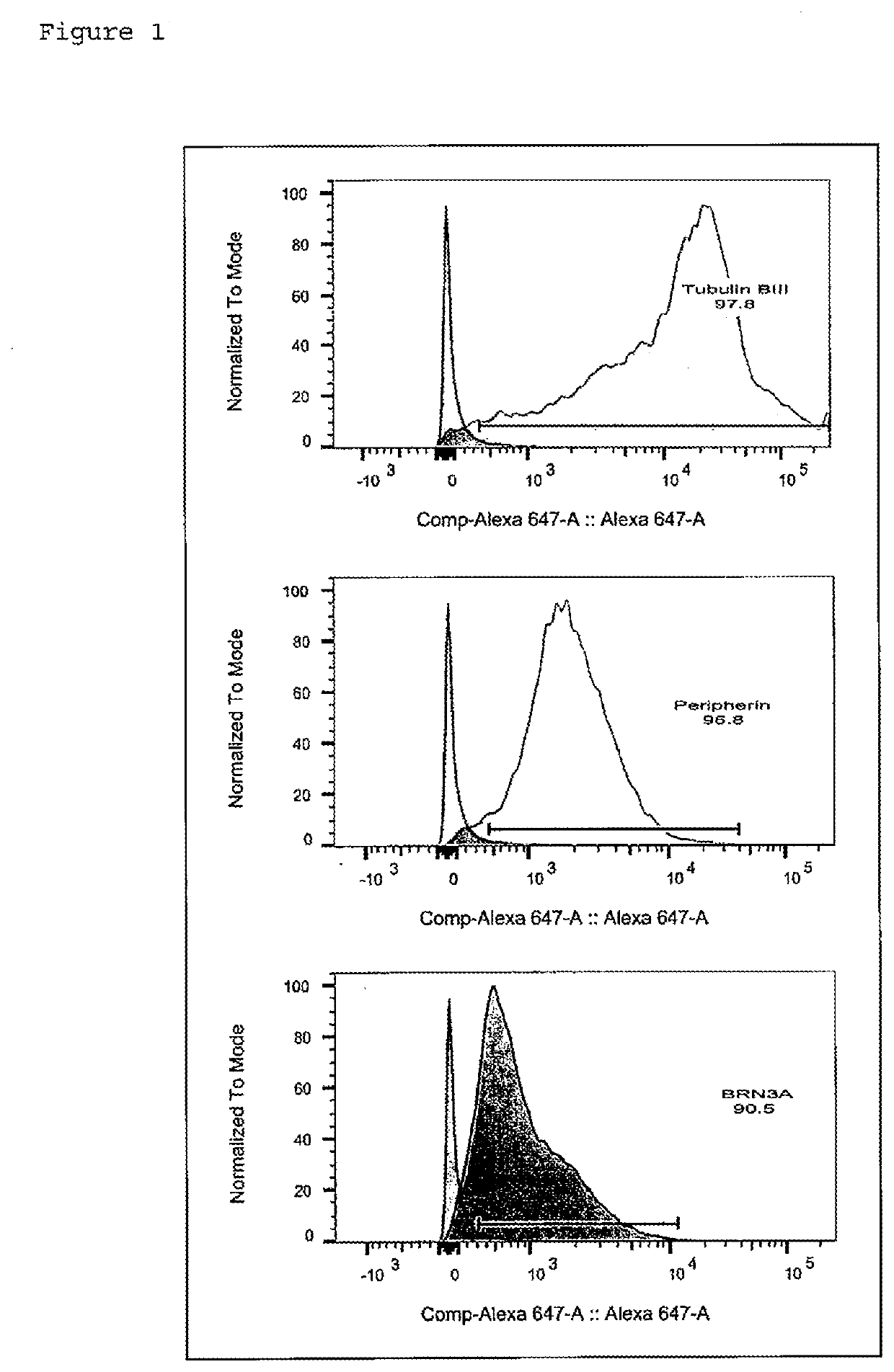Method for manufacturing peripheral nerve cells
a manufacturing method and technology for peripheral nerve cells, applied in the direction of embryonic cells, cell culture active agents, non-embryonic pluripotent stem cells, etc., can solve the problems of inability to cure, irreversible symptoms, and insufficient purity of peripheral nerve cells produced by this method, and achieve the effect of morphology and properties the same and efficient manufacturing
- Summary
- Abstract
- Description
- Claims
- Application Information
AI Technical Summary
Benefits of technology
Problems solved by technology
Method used
Image
Examples
example 1
[0061](1) Preparation and Culturing of Human iPS Cells (Step (a′) in Step (a))
[0062]Human iPS cells (JCRB363 cells, hereinafter, referred to as iPS cells) were purchased from JCRB cell bank. One cell cryopreservation tube of the iPS cells (about 1×104 cells / cm2) were seeded in a 60-mm dish (Corning Incorporated) coated with growth factor-reduced Matrigel™ (Matrigel GFR, Corning Incorporated).
[0063]Coating of the dish with Matrigel™ GFR was performed by diluting a Matrigel™ GFR stock solution 50 times with a DMEM / F12 medium (containing 1% L-glutamine, FUJIFILM Wako Pure Chemical Corporation), pouring it to the dish so as to cover the entire surface, and leaving it to stand at room temperature for 3 hours. The dish was stored at 4° C. until use.
[0064]The culturing was performed in a ReproFF2 medium (ReproCELL Inc.) containing 1% penicillin-streptomycin (FUJIFILM Wako Pure Chemical Corporation) and 10 ng / mL basic fibroblast growth factor (bFGF, ReproCELL Inc.) under conditions of 5% CO...
example 2
[0074]Peripheral nerve cells were manufactured as in Example 1 except that the culture period in Example 1 (3) was changed to 42 days.
PUM
| Property | Measurement | Unit |
|---|---|---|
| temperature | aaaaa | aaaaa |
| temperature | aaaaa | aaaaa |
| diameter | aaaaa | aaaaa |
Abstract
Description
Claims
Application Information
 Login to View More
Login to View More - R&D
- Intellectual Property
- Life Sciences
- Materials
- Tech Scout
- Unparalleled Data Quality
- Higher Quality Content
- 60% Fewer Hallucinations
Browse by: Latest US Patents, China's latest patents, Technical Efficacy Thesaurus, Application Domain, Technology Topic, Popular Technical Reports.
© 2025 PatSnap. All rights reserved.Legal|Privacy policy|Modern Slavery Act Transparency Statement|Sitemap|About US| Contact US: help@patsnap.com



